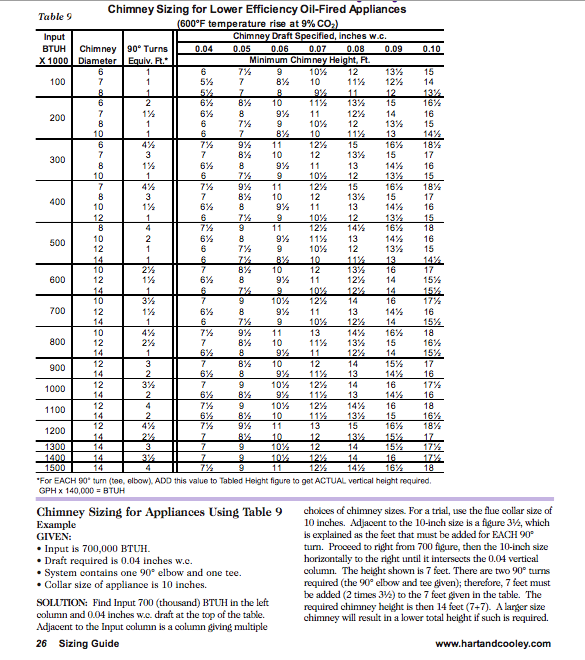Note: the enclosed chimney sizing chart is from Hart and Cooley, a major manufacturer of HT Chimney. These capacities can also be used as a guide for properly built masonry chimneys, but keep in mind that masonry chimneys only use the round or oval part of their cross-section. In other words, a 7x7 inside masonry chimney should be sized as a 7" round, whilst a 7x11 (ID) rectangle should be sized as 8" round.
Some examples using the chart - both are for 300,000 BTU input, which is far more than most wood burners should need, but apropo in the case of certain central heaters.
7" chimney
2 elbows
.07 draft needed
OK, so that would be the 300 row and 7 - going over to .07, we see the chart specifies 12 feet. We have to add 2x3ft to that for the elbos (see 3rd column) - for a total of an 18 foot 7".
Using 6" for the same calcs:
12.5 ft of chimney plus 9 feet to make up for els = 21.5 feet required for the 300K BTU input.
So the real answer is that the amount of turns may have more to do with it than the chimney size. In either case, this is a realistic chart for Class A chimney. It's always good to EXCEED the requirements as opposed to exactly meeting them, but it looks like you can do that in either case.
Note that these charts are for standard oil burners.....but should also apply to wood.
;Chimney_Sizing_Chart


